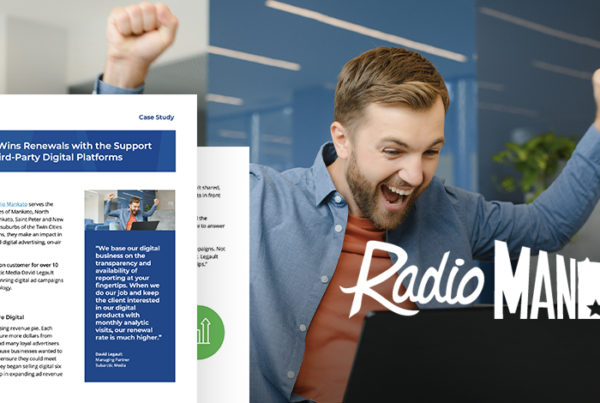SMS marketing is a channel and tactic that broadcasters should have on their radar. The ability to connect with audiences offers many benefits, and it’s two-fold in how it delivers them.
First, you can use it internally to promote stations’ contests, disperse important information and extend programming beyond the air. Second, it’s a digital advertising product you can pitch to your advertisers. They can use it to engage customers with promotions and as part of a loyalty club.
With numerous opportunities to drive revenue for your station, deploying SMS marketing makes business sense. In this post, we’ll focus on two specific areas of how mobile messaging enriches stations and your customers — first-party data collection and engagement.
What Is First-Party Data?
Data collection on customers is a critical aspect of any type of digital marketing. How companies obtain data can occur in three different buckets: first-, second- and third-party data.
First-Party
First-party describes data that companies collect on customers that the company owns. With this intelligence, businesses can drive digital advertising decisions based on customer behaviors.
An example would be the data a customer provides to create an account and make purchases from a company. Based on previous activity, the company may then offer the customer recommendations for new purchases.
Second-Party
First-party data from a trusted partner explains second-party data. Publishers can share this with advertisers that run ads on their websites.
Third-Party
Third-party data is not from a direct relationship. An outside source offers the data, which a company can then use to market to consumers.
Third-party data has long been critical to marketers and advertisers for targeting new customers. It’s also becoming more difficult to obtain, as third-party cookies are on their way out. (Get caught up on cookies in our post on first-party vs. third-party cookies!)
Why First-Party Data Has Greater ROI
Every time someone interacts with a brand on their O&O properties, the company collects first-party data. This contributes to building profiles of these customers, and leveraging this data results in more personalized messages that can drive loyalty and retention. In turn, that can increase the customer lifetime value.
Its quality is much higher than second- or third-party, as it comes from properties you own. It is also opt-in; you have the consent of the party receiving the message.
SMS Marketing and First-Party Data Collection
So, what’s the link between mobile messaging and first-party data collection? The platform used stores all the information of customers and is accessible. With this data, you can do several things:
- Enrich a one-to-one chat with a customer based on their profile.
- Segment your SMS lists so content is more personalized based on first-party data insights.
Personalization Drives Engagement
Personalizing content for audiences directly correlates with engagement and purchases. One study found that personalization makes 80% of customers more likely to make a purchase. Achieving this type of return is possible with mobile messaging. Plus, you’re able to do it at lower costs than other tactics.
Here are some examples.
Example 1: Stations
If you have a new contest to promote, your base of subscribers should receive different messages. Those that are highly engaged (i.e., previously entered) may get one text, and less engaged participants may get another. The language in how you address it could be the difference in how they respond.
Example 2: Advertisers
In a case study from our customers, BMW hypertargeted customers based on first-party data collected. Rather than sending a mass message, they personalized it based on the specifications of the owned car. Depending on this data, customers received different messages for tire promotions.
If your station or advertisers want to ramp up engagement in a channel, personalization is key. Without this, it’s just more noise.
The Value of SMS Marketing Is Rising
Consumers are already more apt to open text messages than any other digital communication, with open rates of up to 98%. In these metrics alone, it’s hard to deny the value of mobile messaging. Add to that the capability to collect and build first-party data, and it’s a winning channel for any organization.






